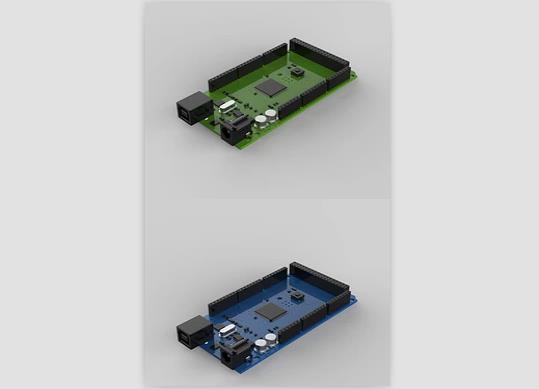Light-emitting diodes (LEDs) are semiconductor devices that convert electrical energy into an optical solid-state. Compared with traditional incandescent lamps, LED has the advantages of long service life, wide color range, durability, flexible design, simple control, and environmental protection. Therefore, LED is considered as a potential light source in the future. Because red, green, and blue (RGB) LEDs can be mixed to produce a very wide color gamut of white light sources, the backlight application of red, green, and blue (RGB) LEDs in LIQUID crystal displays (LCDs) is very attractive, because it means that humans will have thinner, longer service life, higher dimming ratio, more colorful environment-friendly LCDs. Therefore, a lot of research articles have been published on straight down LED backlights and light guiding LED backlights. The world's leading LCD TV with RGB-LED hybrid backlight also came out in sony, which provides a very wide range of color reproduction, is the national Television System Council (NTSC) standard color gamut coverage of 105%.

In order to improve the heat dissipation performance of RGB-LED backlight system, two aspects can be considered: (1) To improve the heat dissipation performance of a single LED. (2) Improve the heat dissipation performance of LED array. As a designer of the rgbled backlight system, we chose the second solution to solve the heat dissipation problem. In order to improve the heat dissipation performance of LED array system, there are also two heat dissipation methods: (1) using fans to increase the flow rate of air around the backlit system. (2) Reduce the thermal resistance from node to environment. It is a better scheme to design the backlight module on the printed circuit board with economic and excellent heat dissipation performance and thermal substrate. Currently widely used conventional polymer insulated metal substrate (IMS) technology, which ACTS as an insulating layer polymer or epoxy resin materials, its structure is shown in figure 1, this technology need special treatment on the surface of a metal base, while the thickness of the insulation layer is about 75 microns, this will increase the thermal resistance of insulated metal substrate. In addition, traditional IMS technology will produce insulation layer and metal substrate layer phenomenon at high temperature.
In this paper, we use magnetron sputtering technology to realize a new type of insulating metal substrate PCB. We chemically generate an insulating layer of 30 to 35 microns in thickness on the aluminum substrate surface, and magnetron sputtering technology is used to form the designed circuit on the insulating layer. This insulating metal substrate provides excellent heat dissipation and eliminates delamination or stripping at high temperatures.
After testing, the thermal resistance of the new insulating aluminum substrate and the traditional polymer insulating aluminum substrate is 4.78 degree Celsius /W and 7.61 degree Celsius /W respectively.
Basic sputtering process
Sputtering is a vacuum process in which materials such as metals, ceramics and plastics are deposited onto a surface to form a thin film. The basic sputtering process is as follows: electrons strike an inert gas atom (usually argon), making it an ion. These energetic ions bombard the target material to be deposited under the action of electric field. Under the action of electric field, a layer of atomic layer film is formed on the surface of the substrate. The thickness of the atomic layer film depends on the sputtering time.
Thermal resistance of anodized insulated aluminum-based circuit boards
The thermal resistance of conventional polymer insulated metal-based circuit boards and anodized insulated aluminum-based circuit boards can be calculated by the above method. Using the above method, we can easily calculate the thermal resistance of two metal-based circuit boards. This paper is not satisfied with a single overall thermal resistance, but also measured and calculated the thermal resistance of each part of the circuit board. The thermal resistance of each part of the circuit board is in series mode. For example, the thermal resistance from the substrate to the environment is the sum of the thermal resistance from the substrate to the heat sink and the thermal resistance from the heat sink to the environment. From the above calculation results, we can find that the thermal resistance of anodized insulated aluminum-based circuit board is 59. 2% lower than that of conventional polymer insulated metal based printed circuit board.
In the development of RGB-LED backlight system, heat dissipation is a very important topic. In this paper, a new aluminum-based insulated circuit board is implemented and an improved method for measuring the thermal resistance of electrical parameters is proposed. Compared with conventional polymer insulated metal-based circuit boards, anodized insulated aluminum based circuit boards have the following advantages:
1) There is no mechanical connection gap between the anodized insulation layer of the circuit board and the aluminum base, which improves the overall mechanical properties of the circuit board.
2) In the metallized layer of the three layers of the film generated by magnetron sputtering technology, can provide at least 1000N/cm2 binding force, which also improves the overall mechanical properties of the circuit board.
3) The new circuit board reduces the number of layers of the conventional circuit board and the thickness of the insulation layer, so that the thermal resistance of the whole board is reduced by 59. 2% compared with the conventional circuit board.
Therefore, compared with conventional polymer insulated metal based circuit boards, anodized insulated aluminum-based circuit boards are more suitable for use in RGB-LED backlight systems.